International Museum Day, May 18, 2024
Importance of People's Museum and Library in Our Times

Part 1 - Farmers' Museum (NFA Grains Museum)
Part 2 - "A museum will, like any living thing, change and grow.” - Smithsonian
Part 3 - The Art of Diorama: Museum of Natural History, UPLB Laguna
Part 4 - UNP Students Visit the Living with Nature Center, San Vicente, Ilocos Sur
National Food Authority Grains Industry Museum
"Old farm tools and artifacts had been sitting quietly, gathering dust at the dilapidated museum of the Central Luzon Regional office in Cabanatuan City. National Food Authority Grains Industry Museum was a brainchild of then NFA Extension Director Abercio V Rotor with a vision to highlight the evolution of the rice industry through various images on production, post-harvest activities, processing, storage and marketing /distribution of rice and other grains . It was intended to serve as NFA's contribution to the preservation of cultural traditions particularly in the agricultural landscape. It operated for sometime but was closed down due to lack of funds and trained personnel to maintain it. But thanks to he history-loving team of Director Amadeo de Guzman and Assistant Regional Director Serafin Manalili, and then Asst Director Mar Alvarez, et al ... "(the whole staff of the NFA regional and NFA provincial offices.)
Rare Artifacts
 The bran contains minerals, vitamins, oil, and digestible fiber which conventional rice mills removed during polishing. Polishing removes the bran leaving the grain white and polished. In the process, much of the grains is broken, particularly the defective and immature ones chalky and powdery. It is the bran that gives the nutritious tiki-tiki which is extracted in the final boiling stage in cooking rice. Tiki-tiki was developed by a Filipino scientist, Dr. Manuel Zamora, a cheap and practical source of infant food supplement which saved thousands of babies during the second World War. It was later popularized as United Tiki-tiki. .
The bran contains minerals, vitamins, oil, and digestible fiber which conventional rice mills removed during polishing. Polishing removes the bran leaving the grain white and polished. In the process, much of the grains is broken, particularly the defective and immature ones chalky and powdery. It is the bran that gives the nutritious tiki-tiki which is extracted in the final boiling stage in cooking rice. Tiki-tiki was developed by a Filipino scientist, Dr. Manuel Zamora, a cheap and practical source of infant food supplement which saved thousands of babies during the second World War. It was later popularized as United Tiki-tiki. .  Biggest wooden harrow (suyod) with a span of two meters, more than twice the size of a typical harrow for upland farming.
Biggest wooden harrow (suyod) with a span of two meters, more than twice the size of a typical harrow for upland farming. The harrow is of two designs and make. One with iron pegs (left) is used on wet paddy. It serves as harrow and leveler. The second is made of bamboo with natural and embedded pegs used as harrow for the upland.
 At the background are naturally shaped hame* made of bamboo. At the foreground is the mould (cross section) showing the formed hame. The process involved is simple. The mould is placed atop an emerging shoot. The shoot grows through the mould and grows to maturity. One or two years after, the bamboo is cut with the mould, and cured and seasoned for durability all in the natural way. (Hame is a curved harness that fits over the nape of a draft animal like carabao and bullock. Hame for the horse is made of two wooden pieces, padded and clamped together around its neck.)
At the background are naturally shaped hame* made of bamboo. At the foreground is the mould (cross section) showing the formed hame. The process involved is simple. The mould is placed atop an emerging shoot. The shoot grows through the mould and grows to maturity. One or two years after, the bamboo is cut with the mould, and cured and seasoned for durability all in the natural way. (Hame is a curved harness that fits over the nape of a draft animal like carabao and bullock. Hame for the horse is made of two wooden pieces, padded and clamped together around its neck.) All over the world there are similarities, based on a general pattern, save variations for ease and comfort in usage, which we call today ergonomics, Thus primitive farmers were the founders of this new science. Pride in the farmer can be read on face on discovering these simple tools displayed in the museum.
----------------------------------------
Native raincoats made of leaves of anahaw (Livistona rotundifolia), cowhide, and woven bamboo slats, with matching headgears likewise made of native materials. Foreground: Sleds, one made of bamboo (left) and the other of wood.

---------------------
Rice Industry Showcase
The Farmers' Museum of the then National Grains Authority, now National Food Authority, was put up in response to the administration's thrust in food self-sufficiency. It was during the time the country gave emphasis on developing cultural pride as a nation and people, as evidenced by the expansion of the National Museum, the putting up of the Philippine Convention Center, and the National Art Center on Mt Makiling, among others, during the administration of the late President Ferdinand E Marcos. The Farmers' Museum occupied the right wing of the Regional NFA Building in Cabanatuan City for two decades, until it closed down. It was once a pride of the agency, the centerpiece of visitation by foreign dignitaries, convention participants, tourists, professors and students, and most especially farmers who found the museum not only as a showcase of the agricultural industry, but as a hallmark of their being the "backbone of the nation." AVR
There are six dioramas, four of these are shown in these old photographs. A wall mural meets the visitor on entering the museum. Indigenous farm tools and implements are lined on the foreground. The dioramas are grouped at the center of the cubicles.
Rice Industry Dioramas

One of the six dioramas, Rice farming on the Banaue rice terraces
“Education is the lifeblood of museums. Museum education has the power and the responsibility to do the challenging inner work of tackling tough topics and turning them into teachable moments... If we truly believe in the power of cultural institutions to impact communities and engage authentically with social justice issues, if we believe in museums’ capacity to bring about social change, improve cultural awareness, and even transform the world, than we must also believe that our internal practices have an impact, and must act according to the changes we seek.” ― Monica O Montgomery
Part 2 - "A museum will, like any living thing, change and grow.”
“A visit to a museum is a search for beauty, truth, and meaning in our lives. Go to museums as often as you can.” – Maira Kalman
Dr Abe V Rotor

Isn’t a museum something concerned with antiques and the things of the past?” A colleague once asked me.
“No, no.” I sounded defensive. Then I began scanning his thoughts. There I saw the image of past civilization and institutions. No wonder he was telling of the Egyptian museum, the Aztecs in the Mexican Museum, the American Indians in the Smithsonian, the Renaissance Gallery, and the dinosaurs in the Chinese Museum in Beijing. All these have long lost their glory and now they are remembered in glass cases and fossils. Then my thoughts turned to SPCQ. Why a museum on its 50th anniversary? My friend flashed a devilish smile.
He played the devil’s advocate; I played the student’s role. He raised the mercury, so with my enthusiasm. I did my assignment. There are museums like the giant Smithsonian Complex and the provincial Manitoba museum in Winnipeg that do not only focus on the past. The space museum projects man’s lofty dreams to conquer space. Hirshorn is a gallery that is both subjective and prospective, veering from the traditional and classic. The Tel-Aviv museum features a documentary of the Iran-Iraq war. The trend of museums today is to link the past and the present, and beat the path for the future. In no other time in history have museums tried to project the fullest breadth of human accomplishments and potentials. They exude a touch of reverence to the Creator, reflecting his faith in the institutions which he built in spite of their imperfections, and man’s glory and admittance of failure – all these point out to one thing: that he is the most special creature that ever lived.
I remember Dr. Dillon Ripley’s words. “ if it is truly active and reflective of its own time, a museum will, like any living thing, change and grow.”
Dynamism lies in keeping abreast with the times - our fast changing modern times, when man in the last two centuries alone, has discovered more things than what all his ancestors probably did.
Humble Beginning of a Museum
In the mind of Dr. Ripley, of course, is one of the magnitude and prestige of the Smithsonian in which he had long been the curator and director. Or those of the internationally known institutions like the Chicago Museum of Natural History, or the Vatican Museum. Then there is Rikj Museum of Holland and the great Louvers of France. Name a country and you will see the finest of her culture in the native land’s museums. But the entire thing has had its early beginning - most probably like how the SPCQ museum got started.
The question is that, “How can a newly born show its worth?” But who does not love a baby? The baby itself is love. He holds the key of idealism in this world of ours. The great promise of God in man is mirrored in his smile and innocence. And he has all the potential that this world would be better to live in with him, as he grows, as he lightens the flame of idealism which in many of us adults had long been extinguished. The SPCQ museum is a baby that rekindles our heart, that tells us that this world will go on despite its imperfection – because we know how to start life again, though the rebirth of faith and hope.
Note: Excerpt from an interview with the author during the inauguration of the SPCQ Museum in 1994






The Hornbill is another endangered Philippine bird. The first and last time I saw hornbills was in the seventies at the tip of Luzon along the treacherous Patapat road joining the Ilocos Region and Cagayan Valley. They are a closely knit family moving on the forest canopy. Their call is heard far and wide. It is resonated by their big hollow bills and echoed by big trees and cliffs.

Cave bats in a simulated habitat. Being nocturnal, the bats hunt from flying insects in the dark locating their prey through echolocation, the principle of the radar.Their droppings make a huge guano deposit mined for agriculture.


Nesting pigeons keep vigil for intruders and predators. Masters of camouflage they blend with the surroundings and remain extremely quiet and still at the sign of danger. But when imminent, the mother bird stealthily dashes to another place and decoys away the attention of the enemy.

Instead of a diorama, the actual skeleton, and replica, of a whale are displayed for anatomical and morphological study. In the Smithsonian the blue whale, the biggest creature that ever lived on earth spans the length of a hall the size of a typical chapel.

Centennial celebration of UPLB, pictorials at the museum's lobby.
A visit to an 18th century Basi wine cellar
"When life becomes unbearable living in a jungle of concrete;
when pressure of work is taking its toll and you may be the next,
don't tarry, reach out for the green tunnel." - avr
When life becomes unbearable living in a jungle of concrete;when pressure of work is taking its toll and you may be the next,don't tarry, reach out for the green tunnel;when the air is filled with smog and you hardly can breathe;when crime grips the street, you feel you're no longer safe,don't tarry, reach out for the green tunnel;when you are losing your friends and you feel sad and lonely;when you are no longer enjoying the so-called Good Life,don't tarry, reach out for the green tunnel;when you ponder over the promise of afterlife as a tunnel, too;when there is time on earth to seek its living counterpart,don't tarry, reach out for the green tunnel;when you shall have found your way to this heaven on earth;when and where man once found peace and contentment,look back, but revere this green tunnel.
Books, the authority, the final say, unquestioned, un-refuted, else any one rising contrary faces punishment, including death or damnation.
Books, the diary, the ledger, the document of conquest and discovery, of battles fought, often in favor of the writer and party.
Books, the epics of Homer, stories of the Grimm Brothers distilled from oral literature passed through generations to the present.

Books, bedtime stories, baby's introduction to the world, legends and fantasies that take young ones to the land of make believe.
Books, the record of ultimate scholarship, are the epitome of the greatest minds in
Books, the precursor of the Internet, the framework of the i-Pod, Tablet, Galaxy, and other gadgets that man becomes a walking encyclopedia.
Books, the progeny of the earliest forms of writing like the cuneiform, hieroglyphics, caves drawings, etchings, scrolls of the Dead Sea.
Books, that gave the idea and structure of the Wonders of the Ancient World, and the significance and belief for which they were built.
Books, that grew with knowledge, brought new schools and movements in arts and philosophy, in unending search for truth.
Books, the greatest treasure of mankind, its collective attributes as humanity, the very stimulus of man's rationality to rise above other creatures - and himself.
Books, that brought about man's disobedience to his creator, playing god, and questioning if god made man, or that man made god.
Books that enlighten man to care for the environment, guide the young and future generations to a better future, and lead man to save his own species from extinction.
-----------------
Author's Note: Herein below is one of the lists of top 100 books of the world. There is no standard for comparison, only preferences by different sources. However, there are books that consistently appear in many lists.
by Martin Seymour-Smith
1. The I Ching
2. The Old Testament
3. The Iliad and The Odyssey by Homer
4. The Upanishads
5. The Way and Its Power, Lao-tzu
6. The Avesta
7. Analects, Confucius
8. History of the Peloponnesian War, Thucydides
9. Works, Hippocrates
10. Works, Aristotle
12. The Republic, Plato
13. Elements, Euclid
14. The Dhammapada
15. Aeneid, Virgil
16. On the Nature of Reality, Lucretius
17. Allegorical Expositions of the Holy Laws, Philo of Alexandria
18. The New Testament
19. Lives, Plutarch
20. Annals, from the Death of the Divine Augustus, Cornelius Tacitus
21. The Gospel of Truth
22. Meditations, Marcus Aurelius
23. Outlines of Pyrrhonism, Sextus Empiricus
24. Enneads, Plotinus
25. Confessions, Augustine of Hippo
26. The Koran
27. Guide for the Perplexed, Moses Maimonides
28. The Kabbalah
29. Summa Theologicae, Thomas Aquinas
30. The Divine Comedy, Dante Alighieri
32. The Prince, Niccolò Machiavelli
33. On the Babylonian Captivity of the Church, Martin Luther
34. Gargantua and Pantagruel, François Rabelais
35. Institutes of the Christian Religion, John Calvin
36. On the Revolution of the Celestial Orbs, Nicolaus Copernicus
37. Essays, Michel Eyquem de Montaigne
38. Don Quixote, Parts I and II, Miguel de Cervantes
39. The Harmony of the World, Johannes Kepler
40. Novum Organum, Francis Bacon
41. The First Folio [Works], William Shakespeare
42. Dialogue Concerning Two New Chief World Systems, Galileo Galilei
43. Discourse on Method, René Descartes
44. Leviathan, Thomas Hobbes
45. Works, Gottfried Wilhelm Leibniz
46. Pensées, Blaise Pascal
47. Ethics, Baruch de Spinoza
48. Pilgrim's Progress, John Bunyan
49. Mathematical Principles of Natural Philosophy, Isaac Newton
50. Essay Concerning Human Understanding, John Locke
51. The Principles of Human Knowledge, George Berkeley
52. The New Science, Giambattista Vico
53. A Treatise of Human Nature, David Hume
54. The Encyclopedia, Denis Diderot, ed
55. A Dictionary of the English Language, Samuel Johnson
56. Candide, François-Marie de Voltaire
57. Common Sense, Thomas Paine
58. An Enquiry Into the Nature and Causes of the Wealth of Nations, Adam Smith
59. The History of the Decline and Fall of the Roman Empire, Edward Gibbon
60. Critique of Pure Reason, Immanuel Kant
61. Confessions, Jean-Jacques Rousseau
62. Reflections on the Revolution in France, Edmund Burke
63. Vindication of the Rights of Women, Mary Wollstonecraft
64. An Enquiry Concerning Political Justice, William Godwin
65. An Essay on the Principle of Population, Thomas Robert Malthus
68. Course in the Positivist Philosophy, Auguste Comte
69. On War, Carl Marie von Clausewitz
70. Either/Or, Søren Kierkegaard
71. The Manifesto of the Communist Party, Karl Marx and Friedrich Engels
72. "Civil Disobedience," Henry David Thoreau
73. The Origin of Species by Means of Natural Selection, Charles Darwin
74. On Liberty, John Stuart Mill
75. First Principles, Herbert Spencer
76. "Experiments with Plant Hybrids," Gregor Mendel
77. War and Peace, Leo Tolstoy
78. Treatise on Electricity and Magnetism, James Clerk Maxwell
79. Thus Spake Zarathustra, Friedrich Nietzsche
80. The Interpretation of Dreams, Sigmund Freud
82. Relativity, Albert Einstein
83. The Mind and Society, Vilfredo Pareto
84. Psychological Types, Carl Gustav Jung
85. I and Thou, Martin Buber
86. The Trial, Franz Kafka
87. The Logic of Scientific Discovery, Karl Popper
88. The General Theory of Employment, Interest, and Money, John Maynard Keynes
89. Being and Nothingness, Jean-Paul Sartre
90. The Road to Serfdom, Friedrich von Hayek
91. The Second Sex, Simone de Beauvoir
92. Cybernetics, Norbert Wiener
93. Nineteen Eighty-Four, George Orwell
94. Beelzebub's Tales to His Grandson, George Ivanovitch Gurdjieff
95. Philosophical Investigations, Ludwig Wittgenstein
96. Syntactic Structures, Noam Chomsky
97. The Structure of Scientific Revolutions, T. S. Kuhn
98. The Feminine Mystique, Betty Friedan
99. Quotations from Chairman Mao Tse-tung [The Little Red Book], Mao Zedong
100. Beyond Freedom and Dignity, B. F. Skinner
Source: Seymour-Smith, Martin. 100 Most Influential Books Ever Written. Secaucus, N.J.: Citadel Press, 1998. © 1998 Martin Seymour-Smith. List from the Internet ~





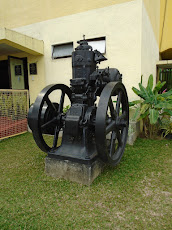

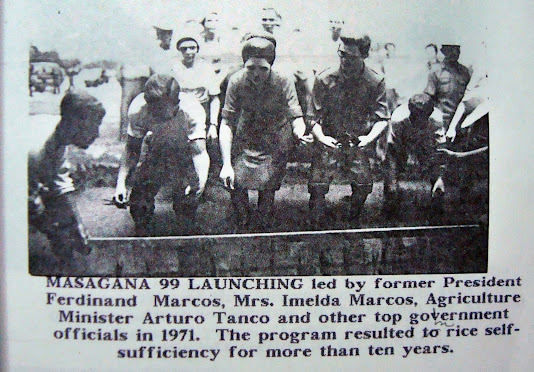


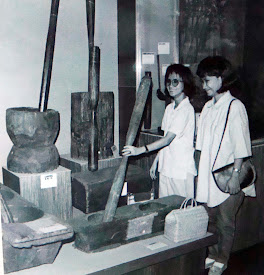











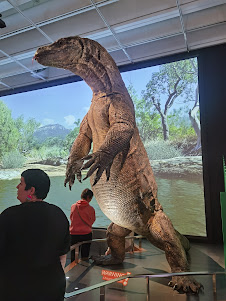
















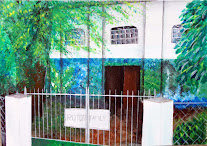











































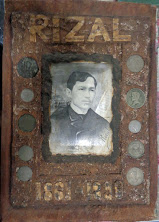









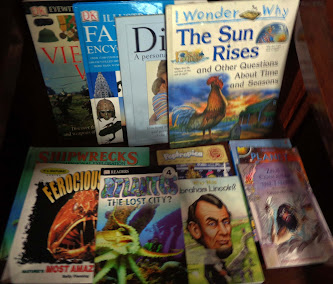




















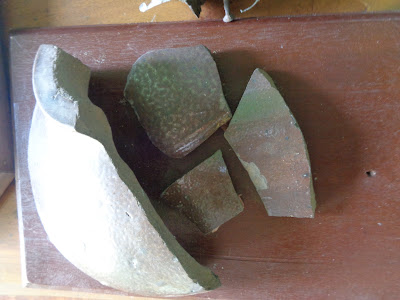
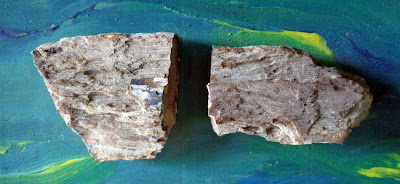







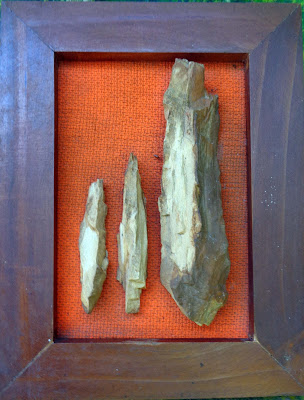


No comments:
Post a Comment